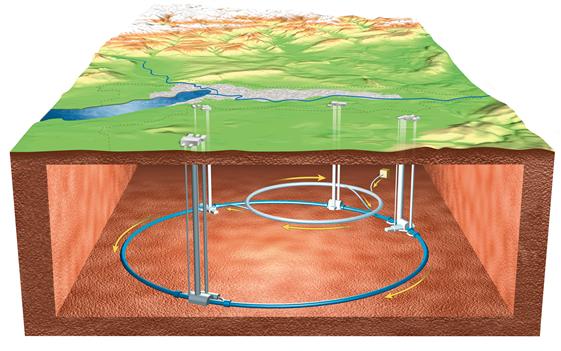No, I am not talking about the bollywood movie which released last week! I am talking about the Large Hadron Collider (LHC) of Council for European Research Nuclear (CERN) in which the scientists will send out two beams of subatomic particl
 es in opposite directions, to collide in the center of the detector leading to not only production of immense amount of energy but also maybe some special type of particles which scientists think exist but have never seen or felt them!
es in opposite directions, to collide in the center of the detector leading to not only production of immense amount of energy but also maybe some special type of particles which scientists think exist but have never seen or felt them!This link gives details on the need of the experiment -> http://public.web.cern.ch/public/en/LHC/WhyLHC-en.html
I am pasting details of the experiment from NY Times article here
http://www.nytimes.com/2008/09/09/science/09collide.html?ref=science
The collider, 14 years and $8 billion in the making, is the most expensive scientific experiment to date. Thousands of physicists from dozens of countries have been involved in building the collider and its huge particle detectors. It is designed to accelerate protons to energies of seven trillion electron volts — seven times the energy of the next largest machine in the world, Fermilab’s Tevatron — and smash them together.
In recent weeks, there has been a blitzkrieg of papers and predictions on what might or might not be discovered, by theorists eager to get their bets down before the figurative roulette ball drops or the dice begin to tumble.
At stake is a suite of theories called the Standard Model, which explains all of particle physics to date, but which breaks down at the conditions that existed in the earliest moments of the universe. The new collider will eventually reach temperatures and energies equivalent to those at a trillionth of a second after the Big Bang. There are many theories about what will happen, including the emergence of a particle known as the Higgs boson, which is hypothesized to endow other particles with mass, or the identity of the mysterious dark matter that provides the invisible scaffolding of galaxies and the cosmos.
But nobody really knows for sure, which is part of the fun, but which has led to a few alarming claims that the collider could spit out a black hole or some other accidental phenomenon that could end the Earth or the universe. Those claims have been vigorously rebutted by a series of safety reports and studies, the most recent of which was published last week in The Journal of Physics G: Nuclear and Particle Physics, a peer-reviewed journal.
The director general of CERN, Robert Aymar, said in a news release, “The LHC is safe, and any suggestion that it might present a risk is pure fiction.”
Even if its critics are right, the end is not nigh. For now, the beams will only be circulating, not colliding, in what is more of what Tommaso Dorigo of the University of Padua called a “mediatic” event on his blog, dorigo.wordpress.com. The intensity of the beams, he wrote, “will be more or less like that of vehicles on a dust trail in Arizona, and our detectors will be like poor souls dozing on the side, thumb up for a hitchhike in case a car stops.”
The first collisions, at a non-Earth-shattering energy of 450 billion electron volts apiece, will not happen for another couple of weeks or so. And it might take a month or two to ramp up the proton energies to five trillion electron volts — as high as the machine will go before shutting down for the winter — and collide them.
The whole world will be watching. Information on how to join them is here: lhc-first-beam.web.cern.ch.
Just FYI: India has made financial contributions to this project and is one of the observing nations.


No comments:
Post a Comment